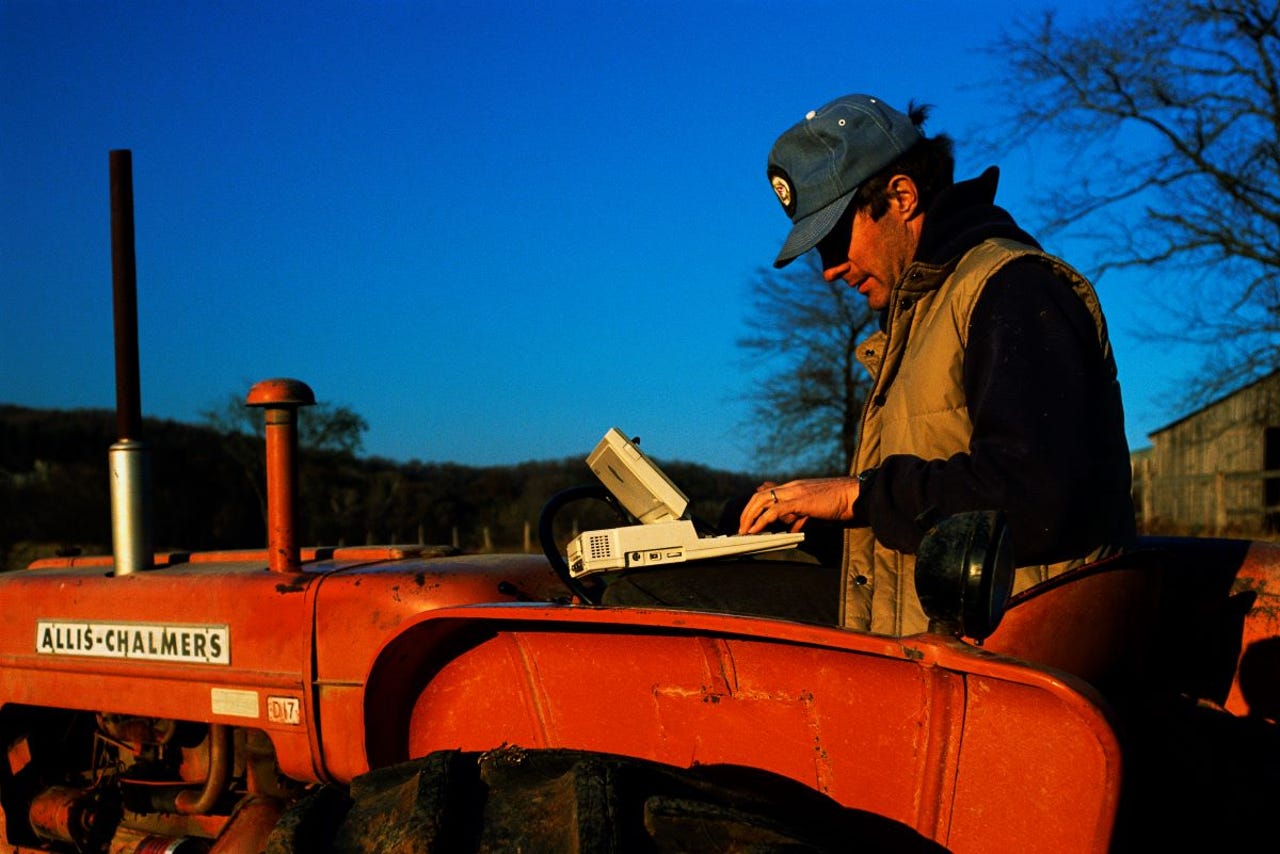
































Rural areas, some of which are still struggling to catch 4G signals, could bring huge value to the economy, provided that they are equipped with the means to modernise.
Image: Joe Sohm / Visions of America / Getty ImagesA peninsula on the south coast of England, complete with dramatic cliffs, marshy lands and thatched inns, isn't exactly where you'd expect to find next-generation mobile connectivity. Yet for the past few months, residents in the Purbecks, one of the most rural parts of Dorset in England, have been able to connect for the first time to a public 5G network.
Reimagining business for the digital age is the number one priority of many of today's top executives. ZDNet offers practical advice and examples of how to get your digital transformation right.
Read nowBuilt by Vodafone, the network was deployed as part of the 5G RuralDorset project, which was launched to explore the possibilities that 5G might unlock in an area that has historically been forgotten by network providers.
And in the Purbecks, which was previously known as a 'not-spot', meaning that there was no 4G mobile coverage at all, the arrival of 5G speeds was something of a shock, to say the least.
SEE: 5G network infrastructure revenue to grow by more than$5 billion in 2021: Gartner
It is hoped that the network can be used next year for the region's Camp Bestival event, for example, not only to deliver better connectivity for festival-goers, but also to add brand-new augmented- and virtual-reality experiences to the program.
The network is also being tapped for fixed wireless access (FWA), in which 5G is used to provide high-speed home broadband to residents, without the need to roll out the infrastructure and road-digging that typically comes with fixed fibre lines, which are particularly challenging to bring to remote areas.
Colin Wood, project manager for the rural connected communities project at Dorset Council, explain that the unprecedented speeds enabled by 5G are already unlocking new opportunities in the area.
One use case is assisted home living, which is enabled by connected IoT sensors spread throughout a vulnerable person's house that warn emergency services when something unexpected happens, and would never be possible without appropriate connectivity. Assisted living devices, says Wood, in turn mean that residents can stay in their own homes for longer -- improving their comfort, but also cutting the costs associated with social care.
5G is now standard on US networks, and these are the top phones that support it.
Read nowEven more generally, Wood says that having a reliable network in the region is critical to the success of rural Dorset. "If people can run businesses from here, work from home here, access the health services they need without having to go to towns and cities, we need to get this stuff right," Wood tells ZDNet.
The digital divide in the UK is still stubbornly real. According to a recent report, up to 9% of the UK is still a not-spot, with the proportion jumping to 20% in Scotland.
There are 1.6 million properties across the country that are unable to access 'superfast' broadband, which provide speeds of 30Mbps or higher. Most of these are unsurprisingly located in remote areas: while 97% of premises in urban areas have access to superfast broadband, the number goes down to 80% of premises in rural zones.
The problem is not UK-specific. In the US, for example, figures show that the majority (83%) of rural Americans have access to internet download speeds of 25Mbps or more -- but that still leaves several millions of citizens lacking a decent connection.
And during the past two years, the divide has been felt even more acutely: work, education and health all suddenly switched online as the COVID-19 pandemic caused national lockdowns, meaning that those struggling with unreliable connectivity fell even further behind.
This is why governments have committed to deploying faster speeds to areas that are harder to reach, and 5G has been pitched as a potential solution to reach those objectives. The UK government has pledged to spend
 Tags quentes :
Negócio
Transformação Digital
Tags quentes :
Negócio
Transformação Digital